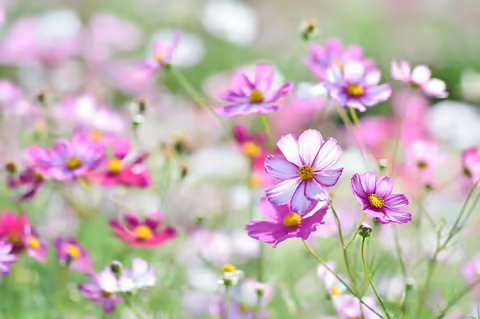URBANA, Ill. Spring brings thoughts of beautiful, colorful, fragrant blooms that brighten landscapes after a long winter.
But while many anticipate the arrival of the first flowers, pollinators, too, are on the lookout. Heirloom flowers provide them with more of the resources they require.
“Hybrids are a cross between two flower types that create specific traits such as flower shape, color, plant height, or disease resistance,” says Nicole Flowers-Kimmerle, a University of Illinois Extension horticulture educator. “These varieties are very uniform in the first season of growth. Seeds saved from those first plants develop into plants with much more variation."
Heirloom varieties are open-pollinated. These flowers stay true to type if another variety does not cross-pollinate them.
“If you plan to save seed from your heirloom flowers, plant other varieties of the same plant at least 3 feet away from each other,” says Flowers-Kimmerle. “Plant them closer together to experiment with creating your own varieties.”
As good sources of pollen and nectar, these blooms attract bees, butterflies, and hummingbirds. Gardeners can plant heirloom flowers in groups to maximize benefits. Learn more about pollinator pockets at go.illinois.edu/PollinatorInfo.
“Heirloom varieties are also known to have more fragrance than modern hybrids,” says Flowers-Kimmerle. “You may notice that old fashioned roses and sweet peas have more scent than newer varieties. Finding a unique bloom color that varies from the current trend is also possible with heirloom varieties.”
Because heirloom varieties are usually taller, they are excellent for cutting gardens, and should be supported with stakes. These heirloom annuals, which can be planted directly into the garden, will produce an abundance of blooms.
-
Sweet peas, Lathyrus odoratus, have beautiful, colorful, fragrant blooms. This vining plant does best in cool weather and is one of the first blooming annuals in the garden. Harvesting flowers encourages more bloom growth, and they will produce blooms until the heat of summer. Look for old-fashioned heirloom varieties for the best sweet pea fragrance.
-
Bachelor's buttons, or cornflowers, Centaurea cyanus, are hardy annuals that self-sow, and are great for a flower bed or as an addition to cut flower bouquets. “These pretty little blooms range in color from white to blue to burgundy,” says Flowers-Kimmerle. “They are a lovely flower to add to a cottage-type garden.”
-
Cosmos, Cosmos bipinnatus, are delicate-looking flowers that are drought tolerant and prefer poor soils. Varying in color from white to pink, burgundy, yellow, and orange, these blooms are lovely bouquets. This plant will produce flowers from summer to fall.
-
Four o'clocks, Mirabilis jalapa, are easy to grow from seed. Flowers open in the cooler evening temperatures, and their trumpet-shaped blooms have a lemony-sweet scent that attracts hummingbirds and moths. Flowers can be white, yellow, or magenta with stripes or splashes of colors on the petals.
For more details on growing flowers and pollinators in your area, locate your local Illinois Extension office at extension.illinois.edu/global/Where-We-Serve.
SOURCE: Nicole Flowers-Kimmerle, Extension Educator, Illinois Extension
ABOUT EXTENSION: Illinois Extension leads public outreach for the University of Illinois by translating research into action plans that allow Illinois families, businesses, and communities to solve problems, make informed decisions, and adapt to changes and opportunities.
PHOTO ACCESS: The photo in this article is available to download for media use.
